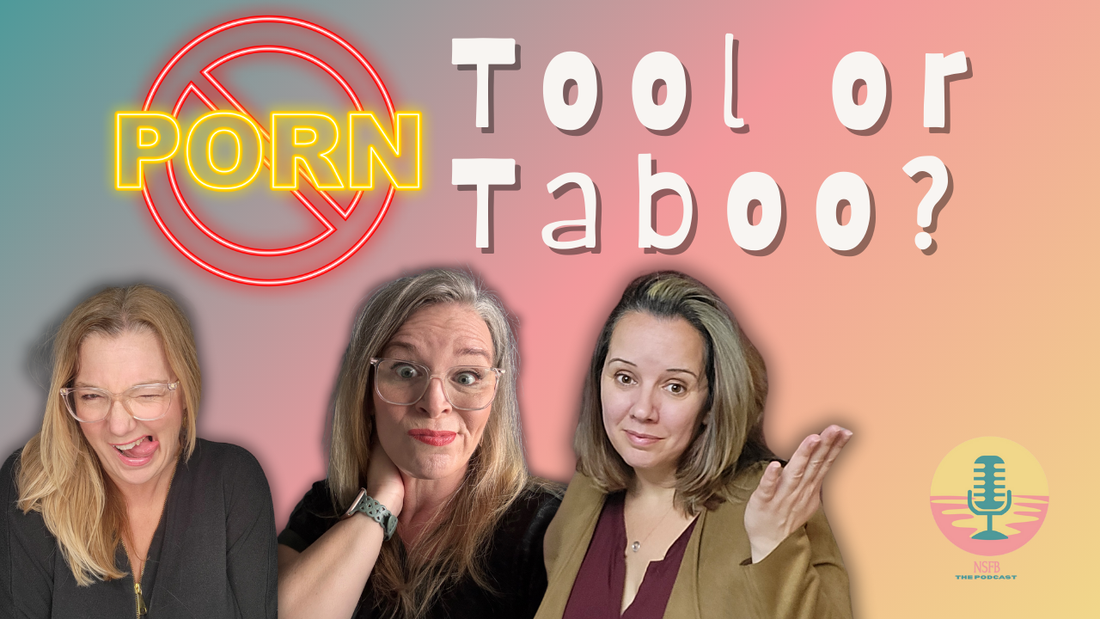
Porn: Tool or Taboo? Let’s Talk About It.
Share
Let’s talk about porn.
Not the porn you hide in your browser history. Not the shame-laced conversations we didn’t have growing up. And definitely not the version where we pretend it doesn’t exist.
Porn is everywhere. It’s in our pockets, on our screens, in our relationships, and shaping our conversations about sex whether we like it or not. So instead of whispering about it, let’s lay it all out — the good, the bad, and the very real gray areas in between.
The Reality Check
Porn isn’t just a “guy thing.” It’s a human thing. Millions of people across all genders, identities, and orientations use it — whether for education, exploration, fantasy, or just some feel-good stress relief.
Here’s the truth:
- Most people are exposed to porn before they’re emotionally ready for it.
- Many adults still carry shame around their use or enjoyment of it.
- And too many couples don’t talk about it — until it becomes a problem.
But what if we treated porn less like a dirty secret and more like what it actually is? A tool. One that can either help us or hurt us, depending on how we use it.
When Porn Can Be Helpful
Porn, when used with intention and consent, can actually enhance your sex life. Here’s how:
- Inspiration – Not sure how to bring up a fantasy? Watching something together might be the icebreaker you need.
- Exploration – It can be a great tool for learning what you like (and don’t).
- Education – Yes, really. When paired with actual sex ed, porn can provide visual context that textbooks never covered.
- Confidence – Solo time is self-care. Period.
And let’s not forget: there’s more ethical, inclusive, and female-focused porn out there than ever before. Real bodies. Real pleasure. Real diversity. Finally.
When It Can Be Harmful
That said, porn isn’t all roses and orgasms. It can cause issues, especially when it replaces communication, intimacy, or connection in real life.
Some of the biggest red flags?
- Unrealistic expectations about bodies, stamina, and consent.
- Hidden use or secrecy in relationships.
- Performance pressure — especially when we compare real sex to highly edited, performative scenes.
- Desensitization — when what once turned you on no longer does.
And let’s not ignore the impact on youth. For many young people, porn becomes their first (and sometimes only) exposure to sexual content — which means it often replaces critical conversations around safety, boundaries, and mutual respect.
What About Couples?
Porn in a relationship is a hot topic. Some couples watch together. Some have boundaries. Some hate it. Some don’t care. Here’s the rule: You get to decide what works for your relationship — as long as there’s honesty.
Set boundaries. Have the conversation. Ask the awkward questions:
- Are we okay watching it separately?
- Do we want to explore it together?
- Are there certain things that are off limits?
- Are we being honest about our use?
Porn isn’t the problem. Avoiding the conversation is.
Let's Drop the Shame
Using porn doesn’t make you broken. It doesn’t mean something’s wrong with your relationship. And it sure as hell doesn’t make you “less than.” The truth is, we live in a world where sex is taboo and shame is deeply ingrained — and that’s the real issue.
So whether you watch it, don't watch it, love it, hate it, or feel totally neutral — the key is owning your desires without guilt.
What We Want You to Know
- Porn is fantasy. It’s not real life.
- Communication is sexier than pretending.
- Boundaries aren’t restrictions — they’re protection.
- And you’re allowed to talk about sex. Loudly.
This isn’t about porn being good or bad. It’s about making it yours — on your terms, with your values, and without apology.
